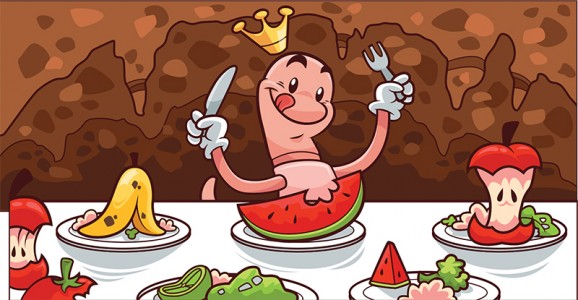
The truth is, they don’t exactly eat it! They primarily eat the germs, bacteria and fungi that thrive on the surface of decomposing materials and consume the waste itself. Earthworms are unable to eat the fresh vegetables we feed them. The vegetables must first start their decay and then they become the best meal for earthworms. Some of the microorganisms consumed by earthworms remain alive even in the pathway of the earthworms while others are killed. In the produced earthworm manure (compost) new microorganisms are activated and the process is ongoing. The greater the variety of materials we throw into the bin the greater the variety of micro-organisms and thus the richer the menu for our earthworms. The important thing throughout this process is that the organisms in the “menu” are aerobic! Meaning microorganisms that require the presence of oxygen for their survival. If anaerobic conditions prevail in your bin then anaerobic micro-organisms will settle, damaging the earthworm population. Anaerobic conditions in a composting bin are mainly due to high humidity which does not allow oxygen to move. This high humidity is due to plant residues that can contain up to 90% water. It is therefore important that our environment inside the bucket is humid but not flooded. There should be materials that ‘flatten’ the material and allow oxygen to move. For this reason it is advisable to add in your bin a shredded newspaper / paper or even cardboard, materials which absorb some moisture but mainly improve the structure of the material so that there are air pockets.
